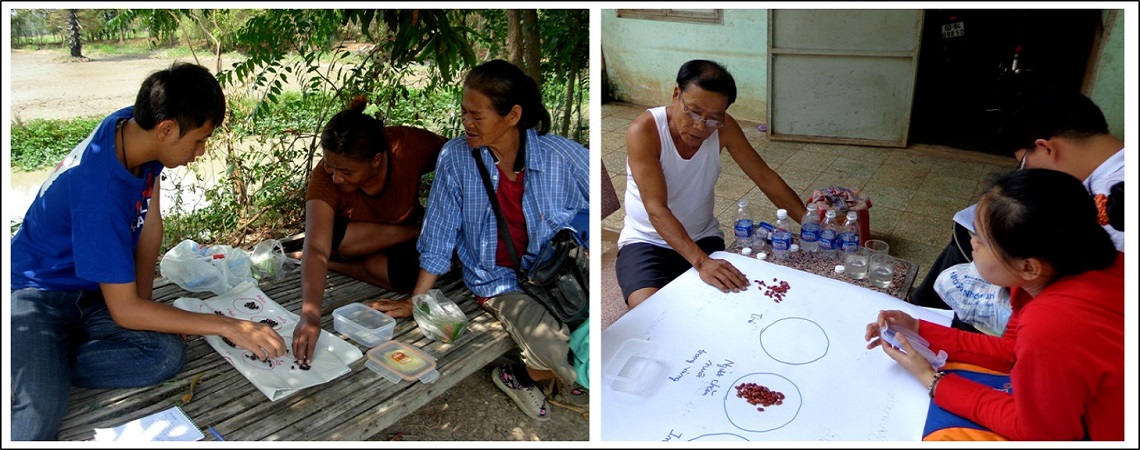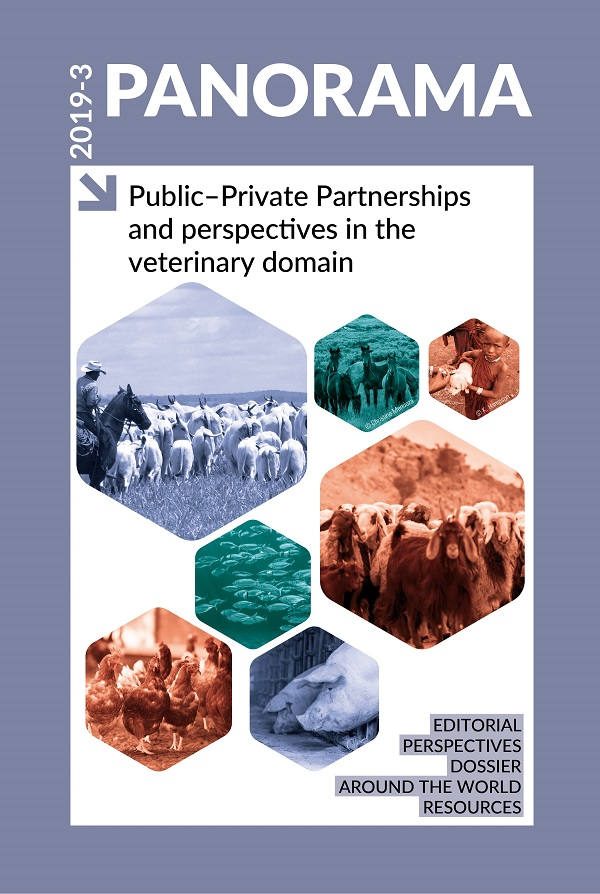Dossier Posted on 2020-01-14 16:00:21
Public-private partnerships: at the heart of animal health surveillance
Keywords
Authors
Marisa Peyre, Animal, Health, Territory, Risks and Ecosystems (ASTRE) Unit, French Agricultural Research Centre for International Development (CIRAD), Montpellier, France.
The designations and denominations employed and the presentation of the material in this article do not imply the expression of any opinion whatsoever on the part of the OIE concerning the legal status of any country, territory, city or area or of its authorities, or concerning the delimitation of its frontiers and boundaries.
The views expressed in this article are solely the responsibility of the author(s). The mention of specific companies or products of manufacturers, whether or not these have been patented, does not imply that these have been endorsed or recommended by the OIE in preference to others of a similar nature that are not mentioned.
Parallel surveillance systems
In the majority of Global South countries, private surveillance systems operate in parallel with official public systems because of a lack of collaboration and limited trust between the sectors [1]. The situation is different in Global North countries, where the public sector, represented by the state, gives a mandate to the private sector to implement animal health surveillance, illustrating a ‘win-win’ type of public–private partnership. This type of partnership sometimes lacks transparency and cooperation and could be reinforced [2]. It is therefore vital to improve the links between surveillance performed by the private and public sectors [3].
Limited recognition of the contraints and needs of the different stakeholders
It is imperative to take further account of the constraints and needs of the stakeholders involved in surveillance in order to nurture their commitment and improve surveillance systems.
In Indonesia, the iSIKHNAS animal health surveillance system was developed in cooperation with local stakeholders and focuses on their needs. iSIKHNAS is not only effective, with more than five million voluntary users, it is also sustainable, because the economic model is based on a public–private partnership with concrete commitments and risks shared between the public and private sectors.
The Global Burden of Animal Diseases (GBADs) initiative, supported by the OIE [4], provides an opportunity to integrate the constraints and needs of private and public stakeholders involved in surveillance and to reinforce and extend these links.
http://dx.doi.org/10.20506/bull.2019.3.3044
References
- Bisdorff B., Schauer B., Taylor N., Rodríguez-Prieto V., Comin A., Brouwer A., Dórea F., Drewe J., Hoinville L., Lindberg A., Avilés M.M., Martínez-López B., Peyre M., Ferreira J.P., Rushton J., Schaik G.V., Stärk K.D.C., Staubach C., Vicente-Rubiano M., Witteveen G., Pfeiffer D. & Häsler B. (2016). – Active animal health surveillance in European Union Member States: gaps and opportunities. Epidemiol. Infect., 145 (4), 802–817. https://doi.org/10.1017/S0950268816002697.
- Delabouglise A., Dao T.H., Truong D.B., Nguyen T.T., Nguyen N.T.X., Duboz R., Fournié G., Antoine-Moussiaux N., Grosbois V., Vu D.T., Le T.H., Nguyen V.K., Salem G. & Peyre M. (2015). – When private actors matter: information-sharing network and surveillance of Highly Pathogenic Avian Influenza in Vietnam. Acta Trop. 147, 38–44. https://doi.org/10.1016/j.actatropica.2015.03.025.
- Figuie M., Peyre M.I. & Binot A. (2013). – Surveillance of infectious animal diseases in Southeast Asia. Promoting the multiplicity of information networks. Perspective, 23 (1–4). https://doi.org/10.19182/agritrop/00040.
- Rushton J., Bruce M., Bellet C., Torgerson P., Shaw A., Marsh T., Pigott D., Stone M., Pinto J., Mesenhowski S. & Wood P. (2018). – Initiation of Global Burden of Animal Diseases Programme (GBADs). Lancet, 392 (10147), 538–540. https://doi.org/10.1016/S0140-6736(18)31472-7.
- Delabouglise A., Antoine-Moussiaux N., Phan T.D., Dao D.C., Nguyen T.T., Truong B.D., Nguyen X.N.T., Vu T.D., Nguyen K.V., Le H.T., Salem G. & Peyre M. (2015). – The perceived value of passive animal health surveillance: The case of highly pathogenic avian influenza in Vietnam. Zoonoses Public Hlth, 63 (2), 112–128. https://doi.org/10.1111/zph.12212.










